The intrauterine device is a T-shaped contraceptive, which is a device made of copper (silver, gold) and plastic that prevents sperm from entering the uterine cavity. If the fusion of the sperm with the egg has already occurred, the spiral does not allow the fertilized egg to attach to the surface of the uterus, resulting in its abortion in the second half of the menstrual cycle.
The prototype of the first intrauterine device was a ring made of an alloy of bronze and brass with a small content of copper, proposed as a contraceptive German doctor Ernst Grafenberg in 1926. A few decades later, in 1960, the American gynecologist Jack Lipps developed a device called the Lipps loop. In its manufacture, an elastic material was used, which eliminated the risks of tissue trauma during the installation of the IUD.
Many women of childbearing age ask the question: “Is it possible to put a spiral? Will the presence of a foreign body harm the body? Let's try to figure this out.
General information about the Navy
The installation of the spiral is carried out only in medical institution after passing the tests and examining the patient by a gynecologist and is recommended for women who have given birth without any identified infectious inflammatory diseases urinary area.
The device is placed for a period of 3-5 years on the third or fourth day from the onset of menstruation, which theoretically excludes the woman from pregnancy. Sexual life is allowed to be conducted on the 8-10th day after its introduction.
To avoid risks possible complications Before the introduction of the IUD, the doctor prescribes the following tests to the woman:
- Bacteriological analysis of smears of the cervix and vagina;
- General analysis of urine and blood;
- Testing for sexually transmitted infections (hepatitis B and C, syphilis, HIV);
- Ultrasound of the pelvic organs.
Installation of a spiral is possible only if there are I and II degrees of purity of the vaginal sphere. If an infectious-inflammatory disease is detected, the gynecologist prescribes an in-depth study and conducts antimicrobial treatment. Before the introduction of a contraceptive, a 6-month break is necessary for complete recovery in order to exclude the transition of the disease into a chronic form.
The question “is it possible to put a spiral” can only be answered by a specialist at an individual consultation. Women with a history of childbirth and multiple abortions should be cautious about the insertion of the coil, as in some cases (in 1%), the IUD can cause perforation (perforation) of the walls of the uterus.
many women 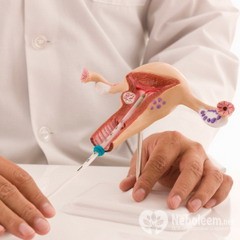 Interested in whether it is possible to put a spiral after childbirth to reduce the risk of re-pregnancy? Experts answer unequivocally: "it is possible". The introduction of the IUD can be carried out 2-3 months after childbirth after examination by a gynecologist. If a woman plans to become pregnant, fertilization is possible already in the first month after the removal of the spiral by a specialist.
Interested in whether it is possible to put a spiral after childbirth to reduce the risk of re-pregnancy? Experts answer unequivocally: "it is possible". The introduction of the IUD can be carried out 2-3 months after childbirth after examination by a gynecologist. If a woman plans to become pregnant, fertilization is possible already in the first month after the removal of the spiral by a specialist.
The opinion of gynecologists on this issue differs: some are sure that it is impossible, other experts say that it is possible, but only when all the necessary studies are carried out. But the points of view of doctors agree on one thing: even the most professional installation of the spiral can cause undesirable complications for women's health.
Adverse reactions associated with IUD implantation are most often observed in patients with chronic pelvic inflammatory disease, irregular menstruation, as well as in nulliparous women, which allows you to partially answer the question "is it possible to put a spiral in nulliparous women."
At the time of the introduction of an intrauterine contraceptive, there may be uterine bleeding, less often - damage to the cervix. In the process of contraception, a certain percentage of women complain about:
- Drawing pains in the lower abdomen;
- Menometrorrhagia (bloody discharge), which is against the background of heavy bleeding upon receipt drug treatment is an indication for the removal of the spiral;
- Inflammatory diseases of the pelvic organs. Inflammatory reactions with IUDs occur in about 4-15% of cases and can manifest as endometritis, cervicitis, pelvioperitonitis, and pelvic abscess. In the transition to a chronic form, these diseases can provoke a violation of the reproductive function and lead to infertility, which can be a severe psychological trauma for a nulliparous woman.
The installation of an intrauterine device, as mentioned above, increases the risk of inflammatory diseases of the pelvic organs (due to the fact that the cervix is always slightly open), the onset of an ectopic pregnancy and thins the endometrial layer in the uterus, which can negatively affect the development of a desired pregnancy, increasing the risk of miscarriage.
So, is it possible to put a spiral on nulliparous women? In fact, it is possible, and this practice is widespread in the work of gynecologists. However, girls who are just about to become mothers in the future are advised to use alternative means of protection: condoms, oral contraceptives, candles, etc.
Contraindications to the installation of the IUD
On forums on the Internet, you can find out that at a gynecologist's appointment, many women are interested in whether it is possible to put a spiral in the presence of diseases of the genital area. Experts voiced a list of direct contraindications to the introduction of an intrauterine device. These include:
- Bloody discharge of unknown etiology;
- Inflammatory and infectious diseases of the small pelvis;
- Fibromyoma, deforming the uterus;
- Pathology of the cervix (erosion, polyps, cervicitis);
- Malignant tumors of the cervix and body of the uterus;
- Pregnancy.
Relative contraindications to the installation of the IUD include an ectopic pregnancy in the past, diseases associated with bleeding disorders, heart defects, and painful menstruation. Also, the use of an intrauterine device is not recommended for women who have experience with many sexual partners.
Thus, it is possible to use the spiral as a means of protection, but only taking into account possible risks, weighing all the pros and cons.
We tell you whether it is possible to put an intrauterine device in nulliparous women. To date, the most effective methods contraceptives are hormonal birth control pills and intrauterine device. And if for some reason you are not recommended to use hormones, then it makes sense to consider the second option. The intrauterine device gives 95% protection against unplanned pregnancy. In addition, a woman absolutely does not feel this device in her body. But before deciding on this method, it makes sense to find out in more detail why a woman is given a spiral, whether it can be used by nulliparous, what is its effect and whether there are contraindications.
1 1131790
Photo gallery: Is it possible to put a spiral on nulliparous girls?
The principle of operation of the intrauterine device, contraindications and side effects
An IUD is a small T-shaped device made of silver, gold, or copper that is placed inside the uterus. This contraceptive blocks the passage of sperm into the uterine cavity, and even if fertilization occurs, the tube does not allow the fertilized egg to gain a foothold and in the second half of the menstrual cycle, the egg is aborted.
The establishment of the spiral is preceded by the delivery of tests for hormones, smears for fungal bacteria, a gynecological examination to exclude infectious and inflammatory diseases. In case of abnormal hormonal background or detection of an infection, before the installation of the IUD, you need to undergo treatment.
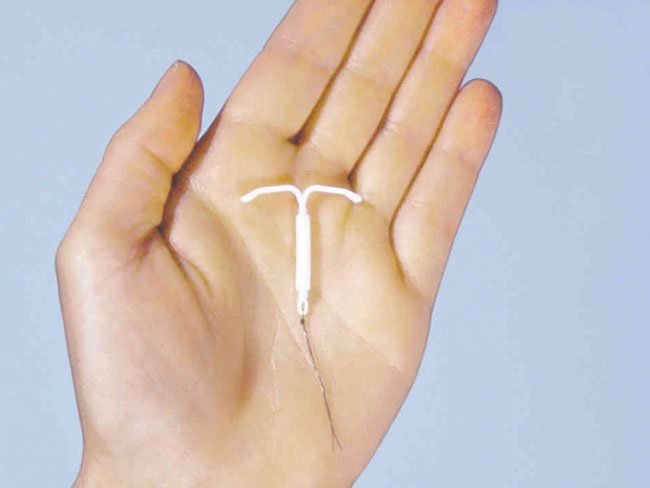
To side effects This method is usually attributed to small stabbing pains in the lower abdomen, especially during intercourse (this problem occurs in the first month after the implantation of the spiral), bloody spotting (most often dark brown).
As for contraindications, the following factors can be attributed to them:
- pregnancy
- lactation
- inflammatory diseases of the genital organs
- erosion of the cervix, as well as polyps
- benign and malignant tumors of the pelvic organs
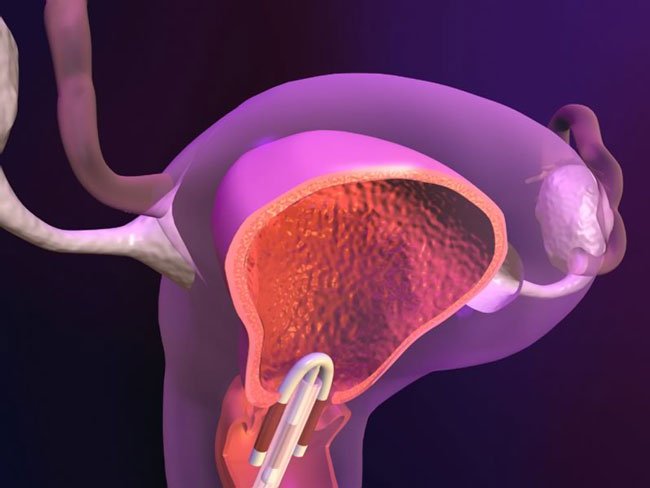
In addition, today more and more gynecologists are inclined to believe that it is not recommended to put a spiral on nulliparous girls.
Why is it impossible to put a spiral on nulliparous?
There are a number of reasons why this method of contraception is not suitable for nulliparous women. First of all, these girls are at risk of getting complications of the internal genital organs, possibly damage to the cervix or its cavity, which usually leads to infertility. There is also a strong possibility that female body who did not know childbirth will expel (exile) this device, which is also fraught with bleeding and possible complications.
Yes, in gynecological practice there are many cases when the intrauterine device was implanted in nulliparous women. But it should be borne in mind that these young ladies are at great risk of never experiencing the joy of motherhood.
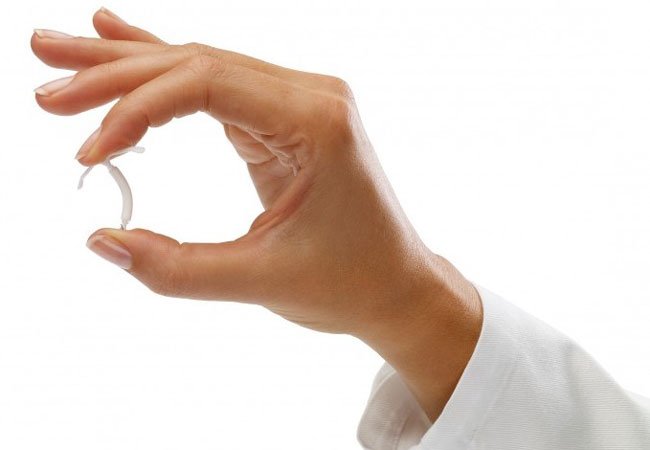
We hope we have helped you answer the question: is it possible to put a spiral on nulliparous. Despite its effectiveness, this type of contraception has its own characteristics, contraindications and the risk of complications. Therefore, gynecologists recommend choosing a different type of protection against unwanted pregnancy. Remember that health is the most important thing you have!
The choice of a suitable method of contraception is very individual and depends on many factors and features. It is necessary to take into account the woman's age, habits, sexual behavior, the presence of concomitant diseases, as well as whether the woman gave birth or not.
There are no significant differences. The peculiarity is only in the change in the structure of the cervix, namely in its external pharynx. The external pharynx of a nulliparous woman has a dotted appearance, and in a woman who has given birth, it acquires a slit-like shape. This is due to the fact that during childbirth, the cervix undergoes significant changes and cracks and tears appear on it.
Are IUDs put on nulliparous women
Is the spiral shown to nulliparous girls? Until now, doctors have not come to a consensus on this issue. Some of them are categorical and argue that it is impossible, others are inclined to believe that it is possible, but only after complete examination and assessments of all "for" and "against".
So, why do most experts believe that the spiral for nulliparous girls is not recommended? This is due to the negative consequences that can affect the reproductive health of a nulliparous woman and deprive her of the joy of motherhood.
- The installation of an intrauterine device has a traumatic effect on the cervix and cervical canal. This can lead to dysfunction of the cervix and the appearance of isthmic-cervical insufficiency (ICI) in the future. ICN - common cause miscarriages and premature births. There is a risk of subsequent problems with pregnancy!
- It is believed that nulliparous women have a high frequency of spontaneous loss of the spiral (expulsion). This complication is associated with the small size of the uterine cavity in nulliparous women.
- Most often, nulliparous are young girls whose sex life is still irregular, and sexual partners often change. These women are at high risk for developing inflammatory processes and sexually transmitted diseases.
- The intrauterine device does not protect against genital infections. And, in addition, it can cause inflammatory diseases of the uterus and appendages.
- The use of an IUD increases the risk of ectopic pregnancy.
- Inflammation against the background of the IUD leads to the development of adhesions in the fallopian tubes.
- There is a possibility of tubal infertility.
- Although small, there is a possibility of a puncture of the uterus (perforation) with the introduction of a spiral. This complication can lead to surgery, and in severe cases even removal of the uterus.
Is there a spiral for nulliparous?

Photo: Girl at the gynecologist's appointment
In fact, in their practice, many gynecologists recommend and install an intrauterine device for nulliparous, because this method of contraception is convenient, reliable, reversible and cost-effective. And, as practice has shown, complications do not always occur. The choice is made by the woman, and the doctor is obliged to warn her of the possible risks.
One of the recommended spirals is hormonal intrauterine system called "Mirena", reliable in terms of contraception and having therapeutic and prophylactic properties, destroys all barriers to the use of the IUD by nulliparous girls.
Important! Mirena can only be delivered to those nulliparous women who have one permanent partner and do not plan to have children in the near future.
The contraceptive effect of the hormone-releasing system "Mirena" lasts for 5 years. The reliability of the spiral is often compared with female sterilization, but unlike it, the contraceptive effect of the Mirena spiral is completely and quickly reversible. Fertility is restored on average 30 days after removal of the system.
WHO experts argue that a nulliparous girl with perfect gynecological health and a complete examination is allowed to install a mini-spiral (type of intrauterine device) with copper, silver or gold. But only under the following conditions:
- if this category of women cannot use other types of contraception;
- has one sexual partner;
- the likelihood of contracting sexually transmitted diseases is minimal;
- does not have chronic inflammatory processes of the pelvic organs.
What examination should be done before the introduction of the IUD
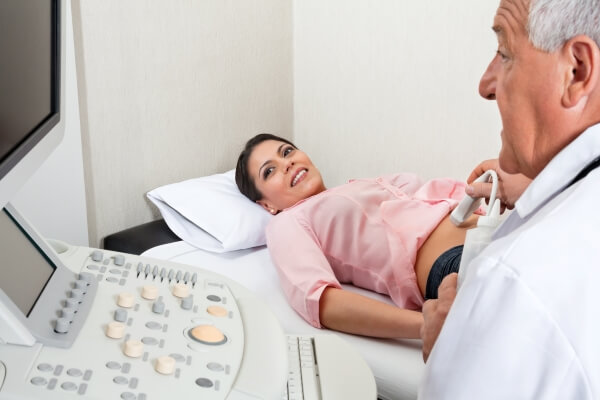
Photo: examination before the installation of the IUD
Before inserting an IUD, the doctor will prescribe the following examination for you:
- A smear on the vaginal microflora. If the result shows signs of inflammation of the vagina (colpitis), then the introduction of the spiral will be possible only after a course of treatment. Otherwise, together with the spiral, the infection from the vagina will enter the uterine cavity in an ascending way. And then, such a complication as inflammation of the uterus or appendages is inevitable.
- A smear for cancer cells from the cervix. It is done in order to exclude precancerous and malignant diseases. Otherwise, the spiral is strongly discouraged.
- Ultrasound of the uterus and ovaries will be prescribed to exclude anomalies in the development of the genital organs. The abnormal structure of the uterus is a contraindication for the IUD.
- A blood test for hCG to rule out pregnancy. The test is allowed.
- Routine examination in the form of blood and urine tests.
- A gynecological examination is also mandatory.
Does the process of installing the helix differ in those who have given birth and those who have not given birth?
The technique and rules for installing a spiral are the same for all women, regardless of whether there was a birth or not.
Contraindications to the IUD
The spiral for nulliparous women is absolutely contraindicated in the following conditions:
- suspicion of oncological diseases of the cervix and uterus;
- ectopic pregnancy in the past;
- abnormal structure of the uterus;
- frequent inflammation of the genital organs;
- heavy, prolonged, painful menstruation;
- severe anemia;
- uterine fibroids;
- metal allergy.
Alternative methods of contraception for young nulliparous are condoms, hormonal contraceptive pills, suppositories.
If you are a young nulliparous girl who has decided, then follow the following rules:
- the first week after the introduction of the intrauterine device, refrain from sexual activity;
- avoid strenuous exercise;
- after each menstruation, check the threads of the IUD in order to notice the displacement or loss of the contraceptive in time;
- pay attention to the first signs of inflammation (fever, copious discharge with odor, discomfort or pain in the lower abdomen);
- every 6 months, undergo a pelvic ultrasound;
- visit a gynecologist regularly;
- do not change sexual partners - this increases the risk of inflammation.
Remember! If inflammation of the uterus has begun, the spiral must be removed.
If you do not have any complaints, you feel well, you comply with all conditions - continue to use the IUD for 5 years or as long as necessary. In this case, the intrauterine device will not harm you.
The opinion of a gynecologist who believes that it is impossible to put a spiral on nulliparous girls. Video
See what the gynecologist says regarding contraindications to the installation of an intrauterine device. The video lasts a little more than 2 minutes, so it won’t take much of your time, but it will give you food for thought.
With the advent of the baby, the life of a newly-made mother can be significantly adjusted. All the time is devoted to the child and the family, sleepless nights, walks, diapers, feeding, etc. - all this greatly tires a woman, and she simply does not have time to think about herself. And this is very important! After all, after delivery, the mother's body needs special care and attention. For example, a woman after giving birth should consider contraceptive methods to protect herself from an unplanned pregnancy.
As a rule, most couples, breaking medical recommendations, resumes intimate life earlier than the recommended period, and in fact the probability of becoming pregnant during this period is too high. That is why the issue of contraceptives must be resolved immediately after discharge from the hospital, and even better - during pregnancy.
Methods of protection against unplanned pregnancy after childbirth
It is, of course, advisable to discuss with your doctor the question of contraceptive methods even during the period of bearing a baby. If for some reason this did not happen, do not worry, because you can discuss this topic with the doctor of the maternity hospital. In any case, you can not do without consulting a gynecologist. Self-choosing contraceptives during the period breastfeeding You risk not only your health, but also your child's. After all, many of them can adversely affect lactation and, accordingly, the well-being of the baby.
During lactation, a woman is allowed to use the following methods of contraception:
- Barrier, that is, the use of condoms. The classic method of protection against unplanned pregnancy, however, if used incorrectly, it does not give a 100% guarantee.
- Oral (intake hormonal drugs) - is prescribed exclusively by a specialist, since not all of the existing drugs are allowed during the GV period.
- Installation of an intrauterine device- the most popular method after childbirth. The main advantages of the IUD are safety and long-term results (up to 5 years).
Which spiral is better to put after childbirth?
Today there is a wide range of gynecological devices. They differ in quality, shape, composition. The choice largely depends on the cost and, of course, the individual characteristics of the female body.
The core of the spirals contains active substances, they provide protection against unplanned pregnancy, and due to the shape (T-shaped, ring-shaped, etc.), the contraceptive device is held inside the uterine cavity.
So, spirals are of two main types:
- non-drug- are made of polyethylene and contain metal (platinum, silver, etc.);
- medical(contain copper ions and progesterone) - in addition to contraceptive effect have a positive effect on the ovulatory period, the structure of the endometrium, etc. In addition, such devices are less likely to provoke complications and are better fixed in the uterine cavity. However, there is also a downside. Due to the rapid depletion of active components, they must be replaced after 1-3 years.
It is unrealistic to choose the most optimal type of spiral without consulting a doctor. Therefore, if you decide to think about this type of contraception, be sure to consult a gynecologist. The specialist, having studied your history, will be able to choose the most effective and reliable type of gynecological device.
Features of the installation of the Navy
The intrauterine device is installed or removed only in a clinical setting and only by a gynecologist. Before staging, the patient must undergo an examination and pass tests without fail. Only in the absence of contraindications, the doctor will be able to determine the date of setting the IUD. Usually the procedure is carried out during menstruation. But since the cycle has not yet been fully restored in newly-made mothers, the installation can be carried out at any time. If the birth went without complications, then this can happen as early as 6-7 weeks after the birth of the crumbs. Otherwise (for example, when caesarean section) the procedure will have to be postponed for six months.
The installation of the IUD is quick and almost painless. The shelf life of a gynecological device depends on the quality of manufacture, it can be a year, or maybe eight years. But this does not mean at all that the spiral should be worn for as long as indicated in the instructions. If desired, it can be withdrawn ahead of schedule.
In the first days after the procedure, the doctor will definitely recommend to refrain from sexual intercourse and exclude physical activity, as well as not to use tampons and refuse to visit the bath or sauna. In the future, the IUD will not cause discomfort, and the woman will be able to safely return to her usual way of life. However, after 10 days, and then again 6 weeks after installation, you need to see a doctor to make sure that the coil is fixed correctly and there are no complications. In the future, visits to the doctor should be made on a regular basis - twice a year. However, if there are alarming symptoms (menstrual irregularity, lower abdomen hurts, the temperature has risen, or the threads of the spiral cannot be felt) - immediately go to the gynecologist.
Pros and cons of the Navy
Having discussed the types of IUDs and the principle of their installation, one cannot but recall the positive and negative aspects of this method. The advantages of the Navy are:
- safety during lactation;
- long shelf life;
- 99% contraceptive effect;
- do not disrupt the usual life;
- devices containing progesterone reduce pain and reduce the duration of monthly discharge;
- availability.
The disadvantages of the Navy include:
- discomfort and spotting the first two weeks from the date of installation;
- long and heavy periods in the first three months after the procedure;
- the device provides a contraceptive result, but does not protect against infections;
- after the spiral is established, abrupt mood changes, skin reactions and a decrease in sexual desire can be observed.
Despite all the shortcomings, intrauterine devices are considered the most effective and safe method of contraception in the postpartum period. However, do not forget that the effectiveness of their action depends not only on the professionalism of the doctor, but also on an attentive attitude to one's health.
